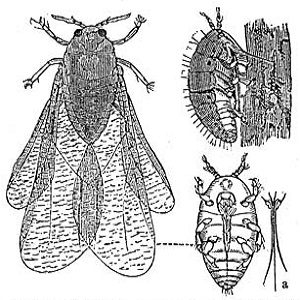Phylloxera


Phylloxera is a devastating insect pest that attacks the roots and leaves of grapevines, causing significant damage to vineyards.
The name "Phylloxera" is derived from the Greek words "phyllo" (leaf) and "xeros" (dry), reflecting the insect's ability to cause vine leaves to wither and dry up.
History
Phylloxera had a profound impact on the global wine industry during the late 19th and early 20th centuries. It was native to North America, but was accidentally introduced to Europe in the mid-1800s when North American grapevines were imported to France.
European grapevines had no natural defense against the pest, and Phylloxera rapidly spread, destroying vast vineyard areas, leading to economic losses and significant changes in the wine industry.
Traditional wine regions, such as Bordeaux and Burgundy in France, were particularly hard-hit, and many vineyards had to be replanted with grafted vines using North American rootstocks, which provided resistance to Phylloxera.
Phylloxera in Modern Times
Phylloxera is still a great threat, but its spread is now controlled through various measures. Vineyards use grafted vines, where the European grapes are grafted onto resistant North American rootstocks. This allows vines to grow with the desired grape variety while also providing protection against Phylloxera.
Additionally, strict regulations and quarantines are implemented in many regions to prevent the accidental spread to unaffected areas.
Despite the control measures, Phylloxera is a constant concern, and vineyard owners and winemakers must remain vigilant to protect their vineyards from potential infestations.
The historical impact of Phylloxera on the wine industry serves as a reminder of the importance of sustainable practices and the need to protect vineyards from threats that can devastate the grape crops.